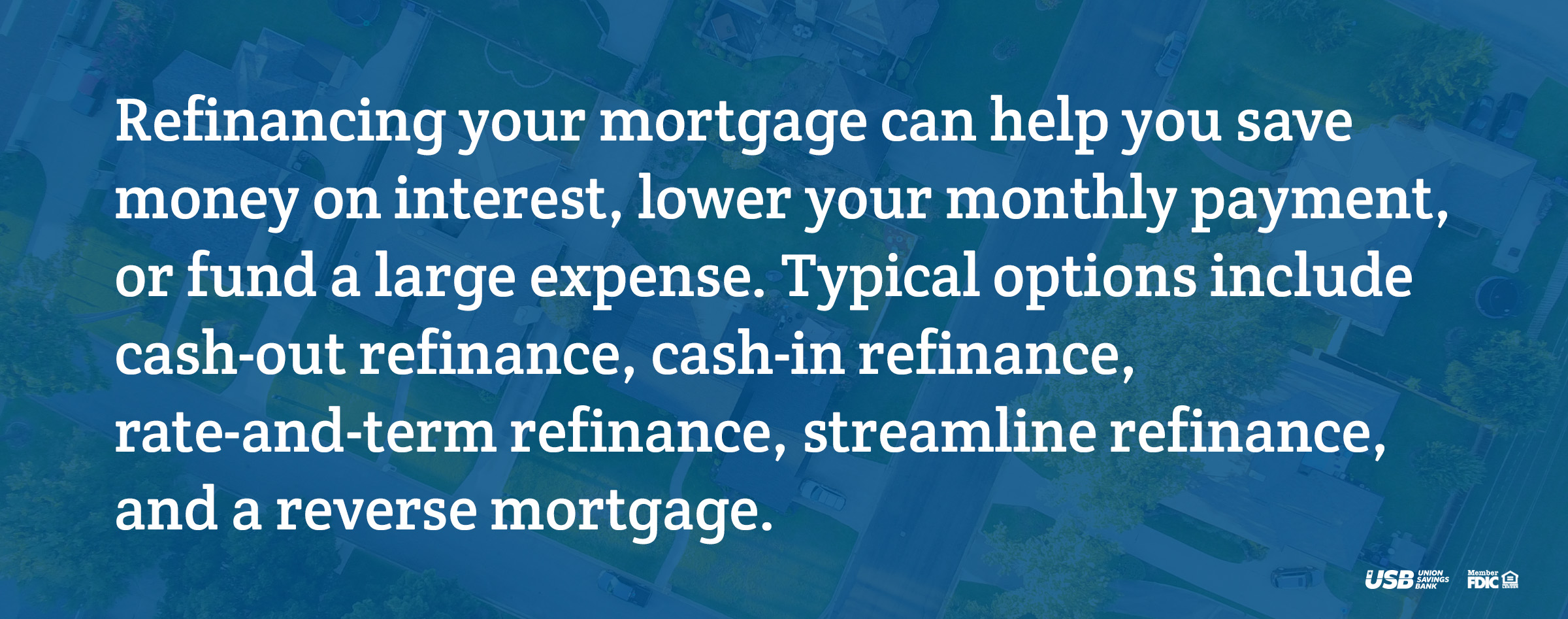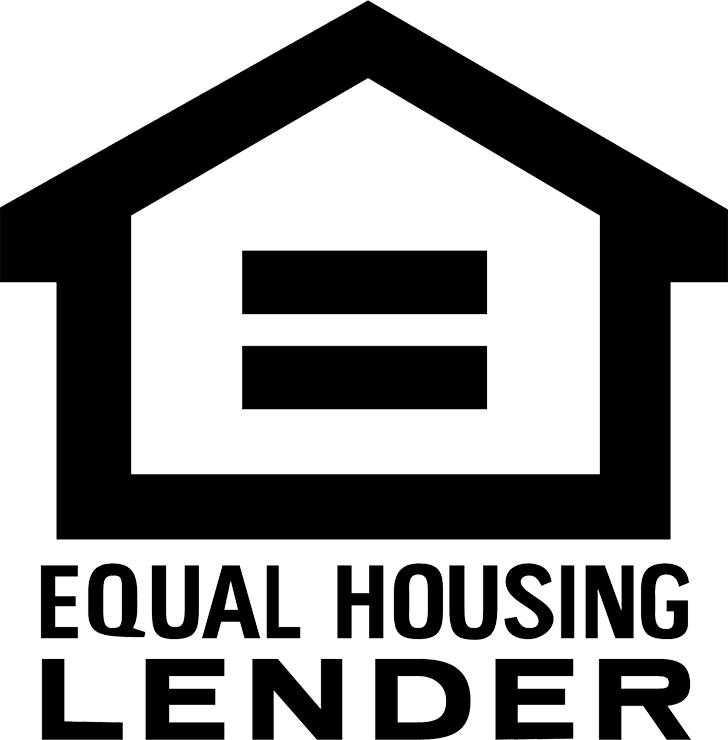6 Refinancing Options for Your Home That Can Save You Money
As a homeowner, you may be familiar with the idea of refinancing your home to save money, access cash, or change your loan terms. But what exactly is refinancing and how does it work? Refinancing is the process of replacing your existing mortgage with a new one, usually with new interest rates, monthly payments, or loan duration. To target your personal goals, there are multiple refinancing options to choose from, each with its own set of possible benefits and drawbacks. In this post, we ’ll explain the main types of refinancing options, which ones can be beneficial to you, and what you need to consider before applying for one.

Why should I refinance my home?
There are many reasons why people refinance their homes. Refinancing your home may allow you to save money by obtaining a smaller interest rate. You should consider refinancing your home if you’re able to reduce your interest rate by at least 1%. If you’re having trouble paying your monthly mortgage, refinancing may allow you to lengthen your mortgage term, resulting in lower monthly payments. You may also refinance for a shorter mortgage to pay off your loan in a shorter amount of time. Refinancing may also allow you to pay off any debts with equity from your home. Another common reason to refinance a home could be due to a recent divorce between two homeowners.
1. Refinancing after a divorce.
Divorcing your co-owning spouse doesn’t automatically mean the house needs to be sold. In some cases, it can be challenging to obtain the house due to disagreements and other issues when it comes to refinancing. Your credit score and financial wellness will greatly influence your eligibility for refinancing, as lenders evaluate your income, debt-to-income ratio, and credit history. Typically, removing your ex-spouse’s name from the mortgage through refinancing is a necessary step to separate their financial ties to the property. The refinancing process involves evaluating the property’s current value, the solvency of the individual seeking to refinance, and securing a new mortgage that aligns with post-divorce financial circumstances. Transitioning from two incomes to one may impact your eligibility for the new mortgage, so it’s wise to consider your financial stability.
2. Cash-out refinance.
A cash-out refinance is where you refinance your existing home loan for a new one and, in the process, receive a cash sum. This type of mortgage refinancing empowers homeowners to access the equity accumulated in their property over time. The excess cash can be applied to a home enhancements, debt consolidation, or other financial necessities. Cash-out refinances typically offer competitive interest rates because they’re supported by the home’s value. Nevertheless, it’s imperative to assess the costs of increasing your mortgage debt, as it may extend the loan term and augment long-term interest expenses.
3. Cash-in refinance.
For a cash-in refinance, a homeowner makes a lump-sum payment on their home loan during the refinancing process. As a result, they replace their current mortgage with one that has a smaller principal balance. This type of refinancing can have serious benefits, such as lowering your monthly payment or helping you save money on interest. Homeowners may choose to put more cash in when refinancing their mortgage to decrease their mortgage balance and meet their lender’s loan-to-value requirements for refinancing.
4. Rate-and-term refinance.
A rate-and-term refinance allows you to change the interest rate and/or term of your existing mortgage without taking additional cash out. Rate-and-term refinancing often carries lower interest rates than cash-out refinancing. The potential benefits of a rate-and-term refinance could include securing a lower interest rate and/or a more favorable term on the mortgage while the principal balance remains the same. Also, this refinancing could lower your monthly payments or potentially set a new schedule to pay off the mortgage more quickly. There are several ways to exercise a rate-and-term option, and it’s important to weigh the pros and cons of each before making any final decisions.
5. Streamline refinance.
A streamline refinance is available for homeowners who have a government-backed mortgage, such as an FHA or VA loan. It allows you to refinance your mortgage with minimal documentation and possibly lower fees. Streamline refinance programs may vary—there may be reduced documentation requirements but instances where not every condition must be met for each documentation category. Streamline refinancing may help you lower your monthly payment, reduce your interest rate, or switch from an adjustable-rate mortgage to a fixed-rate mortgage. However, it’s important to note that streamline refinancing is only available to homeowners who are current have on-time mortgage payments and a good payment history.
6. Reverse mortgage.
A reverse mortgage is a type of refinancing that allows homeowners ages 62 and older (typically who’ve paid off their mortgage) to borrow against part of their home’s equity. However, they may not be able to borrow the entire value of their home even if their primary mortgage is paid off. This type of refinancing can be a great tool for seniors who want to increase their income and remain in their home. A popular reverse mortgage is the Home Equity Conversion Mortgage (HECM), which is backed by the federal government. The amount a homeowner can borrow, known as the principal limit, varies based on the age of the youngest borrower or eligible non-borrowing spouse, current interest rates, the HECM mortgage limit, and the home’s value. Homeowners are likely to receive a higher principal limit the older they are, the more the property is worth, and the lower the interest rate.
Refinancing your mortgage can be a great way to save money on interest, lower your monthly payment, or fund a large expense. There are several refinancing options available, including cash-out refinance, cash-in refinance, rate-and-term refinance, streamline refinance, and a reverse mortgage. Each type has pros and cons, and it’s important to weigh these options carefully before making any final decision. Consider your financial situation, goals, and long-term plans before choosing the right kind of refinancing for you. If you’re unsure of which refinance option to choose, consider consulting with a financial advisor or a mortgage professional. Options and products may vary by lender.
All home-lending products are subject to credit and property approval. Rates and program terms and conditions are subject to change without notice. Other restrictions and limitations apply.
These articles are for educational purposes only and provide general mortgage information. Products, services, processes, and lending criteria described in these articles may differ from those available through Union Savings Bank. For more information on available products and services and to discuss your options, please contact a Union Savings Bank loan officer.
NMLS# 446047


